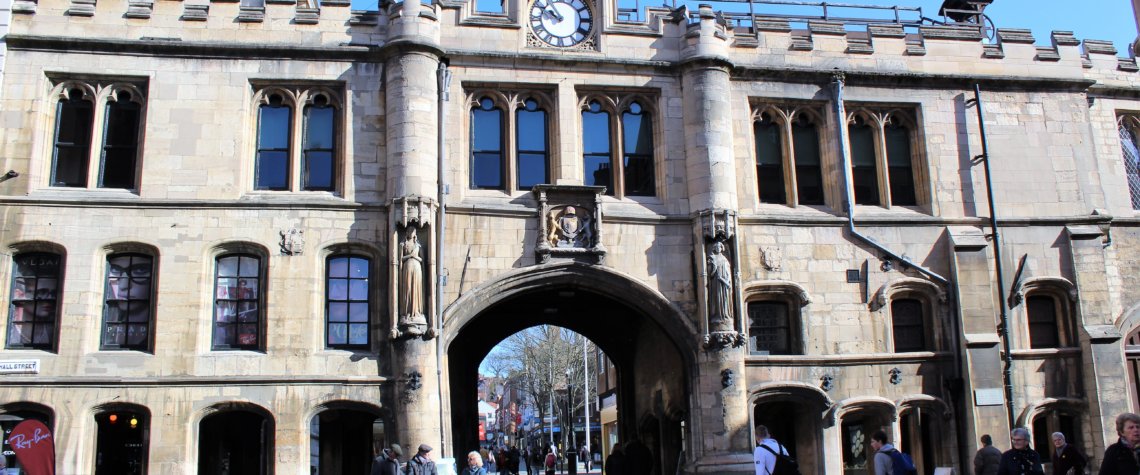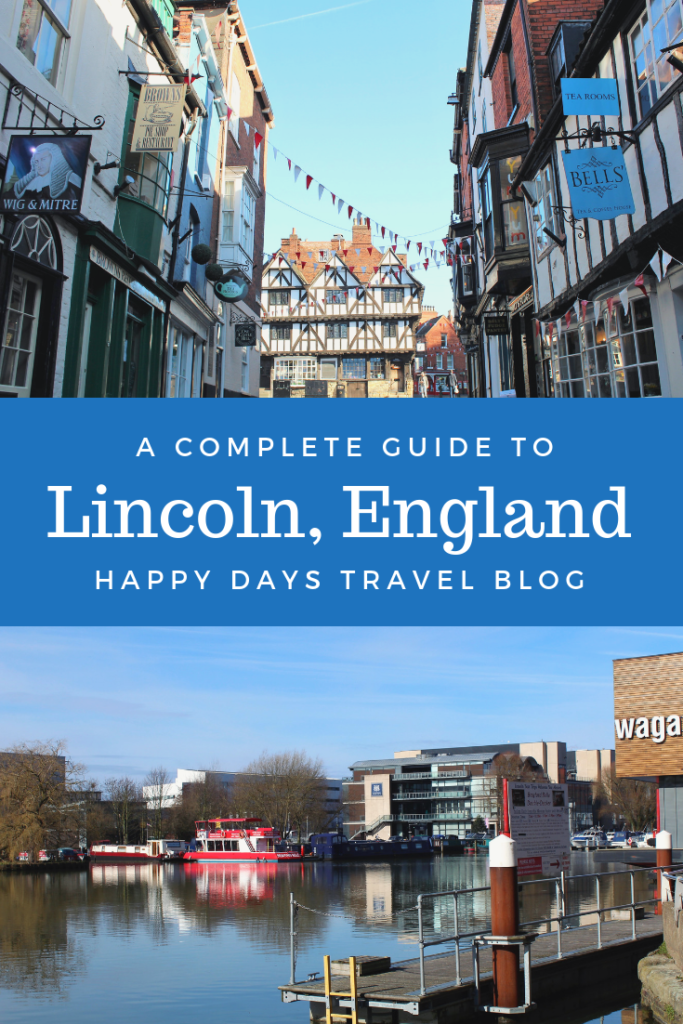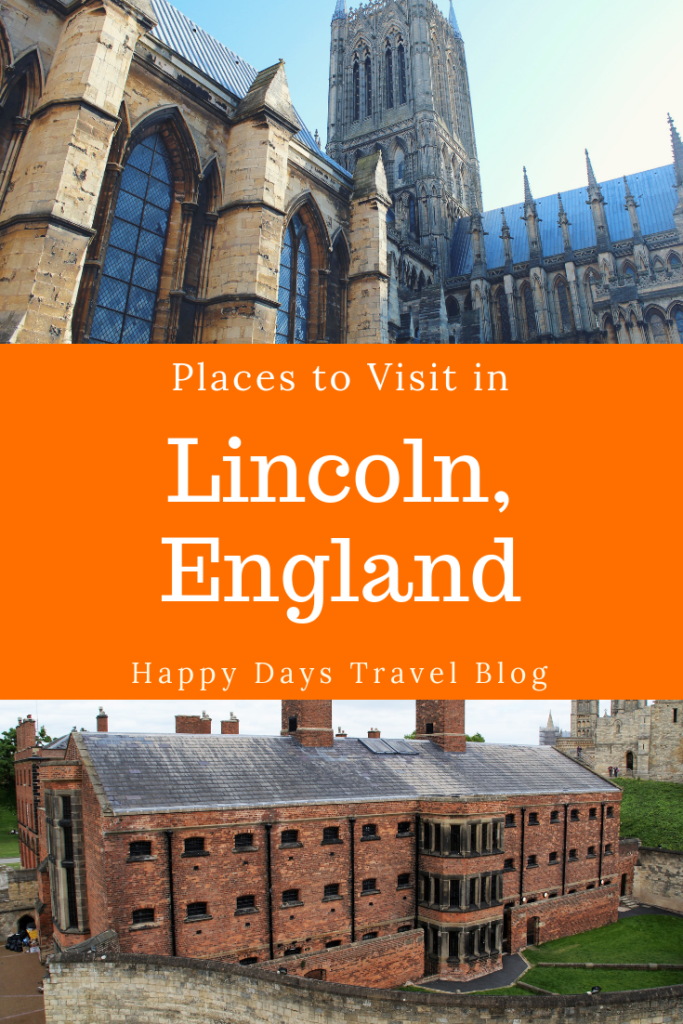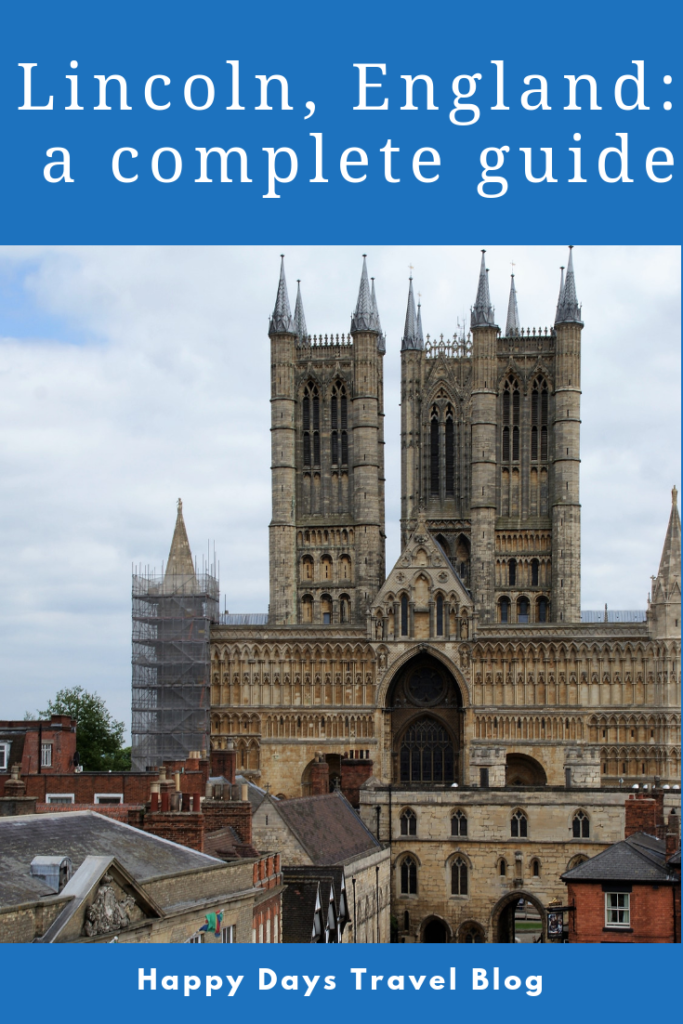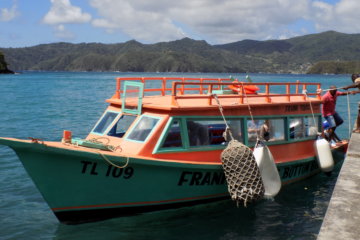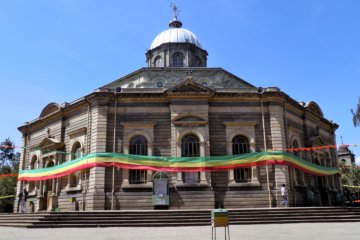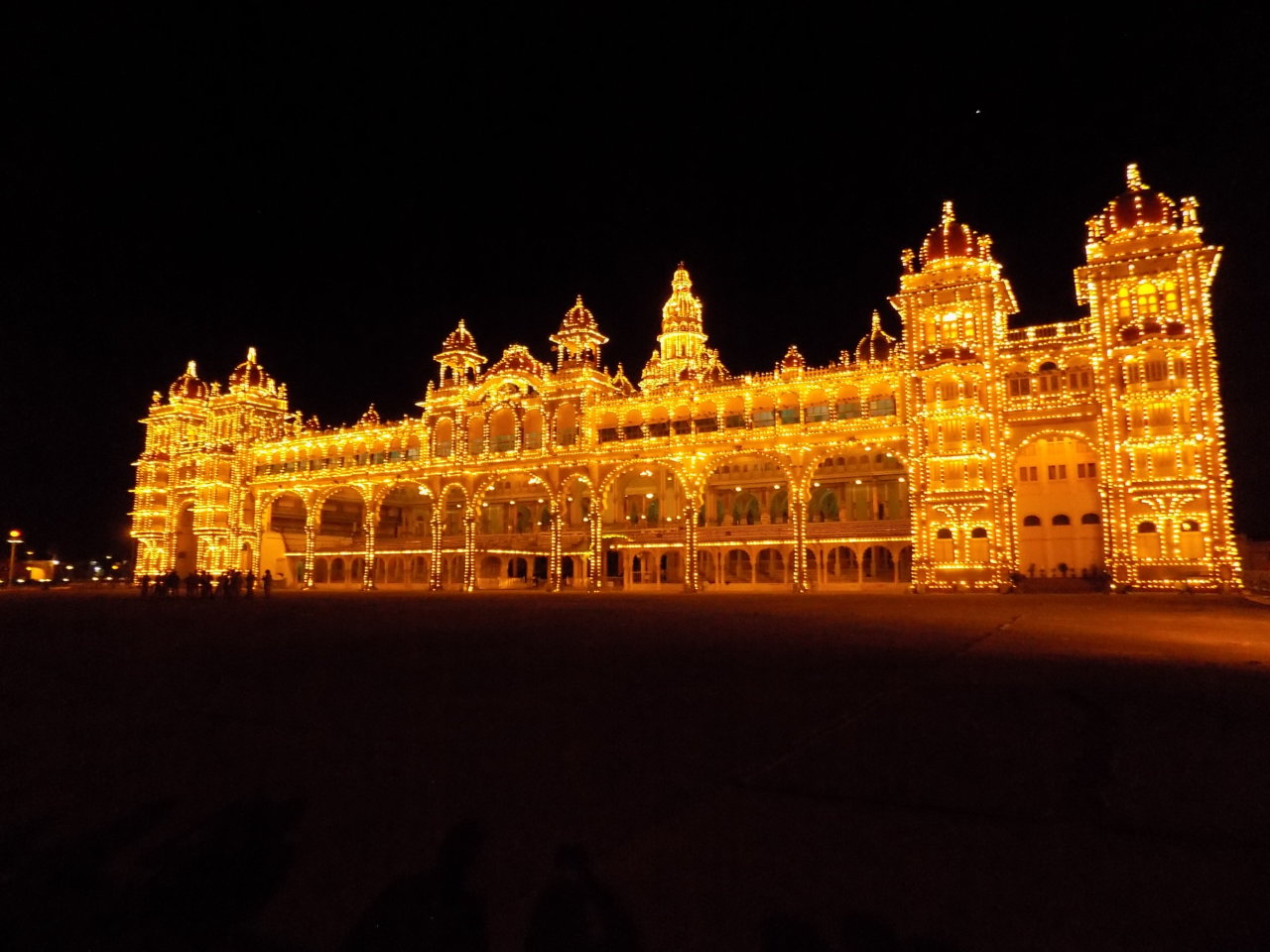Welcome to my Lincoln, England city guide! (As opposed to Lincoln Alabama, Lincoln Indiana, Lincoln Texas, or any of the other 205 towns and cities throughout the world that bear the name ‘Lincoln’!)
In this article
Lincoln Then and Now
Lincoln is a cathedral city and the county town of Lincolnshire in the East Midlands region of England.
History
The city’s origins can be traced back to the Iron Age. In fact, the remains of an Iron Age settlement of round wooden dwellings dating from the 1st century BC was discovered by archaeologists in 1974 at the foot of the hill where the Normans later built Lincoln Castle and Lincoln Cathedral.
Lincoln first came to prominence, though, when it was settled by the Romans who conquered this part of Britain in AD 48. They built a legionary fortress on top of the hill and the city became a flourishing settlement, accessible from the sea both via the River Trent and the River Witham.
Later, Lincoln went into decline and by the end of the 5th century, it was largely deserted, only reviving when it became a trading centre for the Vikings. In 1068, two years after the Norman conquest, William I recognised the city’s strategic importance and ordered the building of Lincoln Castle on the site of the former Roman fort. Construction of the cathedral began soon afterwards.
Over the next couple of centuries, Lincoln became the biggest and one of the most important dioceses in England and its bishops were at the very heart of the establishment and its power. When the Magna Carta was drawn up in 1215, one of the witnesses was Hugh of Wells, Bishop of Lincoln. One of the only four surviving originals of the document is preserved in Lincoln Castle today.
Lincoln also emerged as one of the wealthiest towns in England. Its economy was based on locally-woven cloth, much of which was exported.
Later, the city’s fortunes waned particularly during the English Civil War in the 1640s when it was on the frontier between the Royalist and Parliamentary forces and changed hands several times. Many buildings were damaged and by the end of the war, Lincoln had no major industry and no easy access to the sea.
With the building of canals and the coming of the railway during the Industrial Revolution, Lincoln prospered once again. The city excelled in heavy engineering building locomotives and other industrial machinery. During the 20th century’s two world wars, Lincoln switched to weapon production. The first-ever tanks were invented, designed and built in the city by William Foster & Co.
Today
Today, Lincoln is a thriving university town and tourist destination. Its rich history and architectural landmarks are just one reason to visit. There are several theatres, countless shops, bars and restaurants to suit every taste and budget, great places to stay, a football club that has enjoyed reasonable success in recent years, lots of opportunities for interesting day trips into the Lincolnshire countryside, and a full programme of dynamic cultural events throughout the year.
How to Get to Lincoln

By Air
Lincoln’s central location allows for quick and easy access to a number of airports for domestic, European, and international flights.
Humberside International Airport (HUY)
Humberside International Airport is the closest to Lincoln, located 30 miles northeast of the city and just 45 minutes away by road. Among other destinations, it has good connections to Aberdeen and Amsterdam (Schiphol) Airport.
East Midlands Airport (EMA)
East Midlands Airport is located 50 miles southwest of Lincoln, just 75 minutes by road. EMA has good links to Barcelona, Belfast, Brussels and Frankfurt.
Robin Hood Airport (DSA)
Robin Hood Airport in Doncaster is situated 35 miles west of Lincoln, an hour away by road. It has lots of connections, particularly to eastern and southern Europe.
By Car
Lincoln can be reached via the A1 at Newark (A46) from the South and near Retford (A57) from the North. The city is 40 miles east of Nottingham on the A46 and 40 miles south of the Humber Bridge on the A15. It is less than an hour’s drive from the M1. If you are driving from London 145 miles away, expect the journey to take at least three hours via the A1 and A1(M).
By Train
Lincoln Central Railway Station is in the city centre. Direct trains to and from London’s King’s Cross take around two hours. There are also frequent rail connections to other major cities, including Sheffield, Nottingham, Leicester, and Leeds.
By Bus
National Express Coaches run two departures each way every day between London Victoria Coach Station and Lincoln City Bus Station. The journey takes just over five hours.
Where to Stay in Lincoln
When it comes to choosing somewhere to stay in Lincoln, you have hundreds of options. There are many hotels, from 5-star luxury ones to the more mundane. Friendly family-run guesthouses and bed and breakfast establishments abound. If you prefer to self-cater, Lincoln has many apartments and holiday cottages available to rent. There are also several well-appointed campsites close to the city if you have your own caravan, motorhome, or tent.
Lincoln’s official website has full details about the accommodation options available. Click here to read further.
Alternatively, check out booking.com:
Places to Visit in Lincoln
Lincoln Cathedral
Opening Times
Every day from 7.15am to 6.00pm (sometimes access may be restricted due to a special service or event)
The cathedral shop is open from 9.30am to 4.45pm Monday to Saturday and from 10.30am to 4pm on Sunday.
The coffee shop is open from 10am to 4pm Monday to Saturday and from 12 noon to 4pm on Sunday.
The treasury is open from 11am to 3pm Monday to Saturday.
Entrance Fees
- Adults – £8
- Seniors – £6.40
- Children aged 5 to 16 – £4.80
- Children under 5 – FREE
- Family (2 adults and up to 3 children) – £20.80
An introductory floor tour with an experienced guide is included in the price of admission.
The Cathedral staff say that they never want to turn anyone away so, if you can’t afford to pay, there is no entrance charge before 9am or after 4.30pm Monday to Saturday and all day on Sundays.
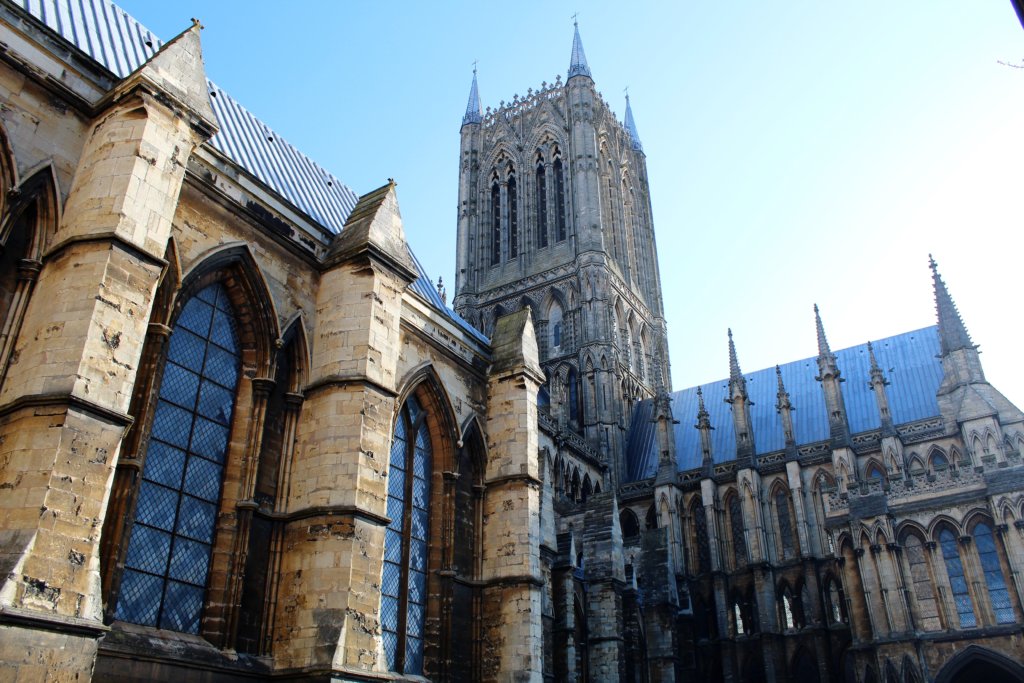
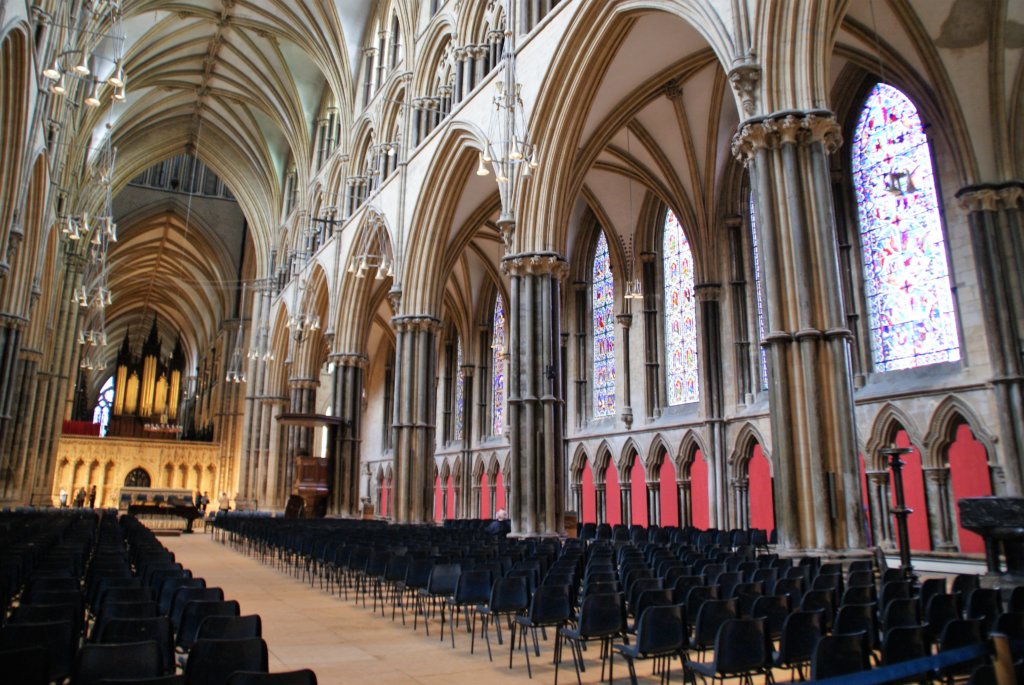
Visit the Cathedral
Undoubtedly, Lincoln’s main attraction is its cathedral, built in the 11th century in the English Gothic style. It stands on a hill, the highest point for miles around (Lincolnshire is famous for being flat!), giving locals and visitors alike a landmark to draw them into the city. When it was completed, Lincoln Cathedral surpassed the Pyramids of Giza as the tallest man-made structure in the world, a title it held for over 200 years. Today, it is the third-largest cathedral in the UK after St. Paul’s in London and York Minster.
It is a beautiful, awe-inspiring building, both inside and out. When you visit, don’t miss the Lincoln Imp, the mascot of the city. Legend has it that in the 14th century, two mischievous imps were sent by the devil to do evil work on Earth. They came to Lincoln Cathedral where they smashed tables and chairs and tripped up the bishop! An angel appeared and ordered them to stop. One of the imps climbed to the top of a stone pillar and began throwing rocks at the angel. The angel punished the imp by turning him to stone. You can still see him sitting there today. The other imp escaped. Locals believe that he is responsible for the strange phenomena whereby, even on a still day, a wind blows through Lincoln Cathedral!
Lincoln Castle
Opening Times
From October to March – 10am to 4pm daily
From April to September – 10am to 5pm daily
Entrance Fees
- Adults – £14
- Seniors – £11.50
- Children aged 5 to 16 – £7.50
- Children under 5 – FREE
- Family (2 adults and up to 3 children) – £35.50
Cathedral & Castle Joint Ticket
- Adults – £18
- Seniors – £15
- Children aged 5 to 16 – £10
- Children under 5 – FREE
- Family (2 adults and up to 3 children) – £46
(The joint ticket includes a second visit to the cathedral within six months)
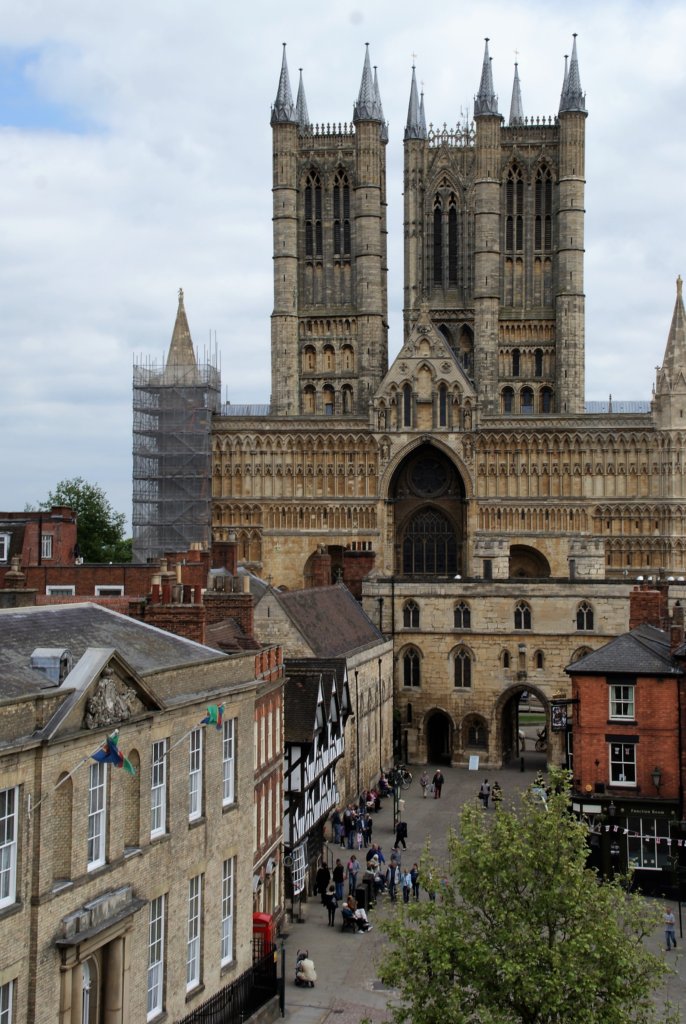
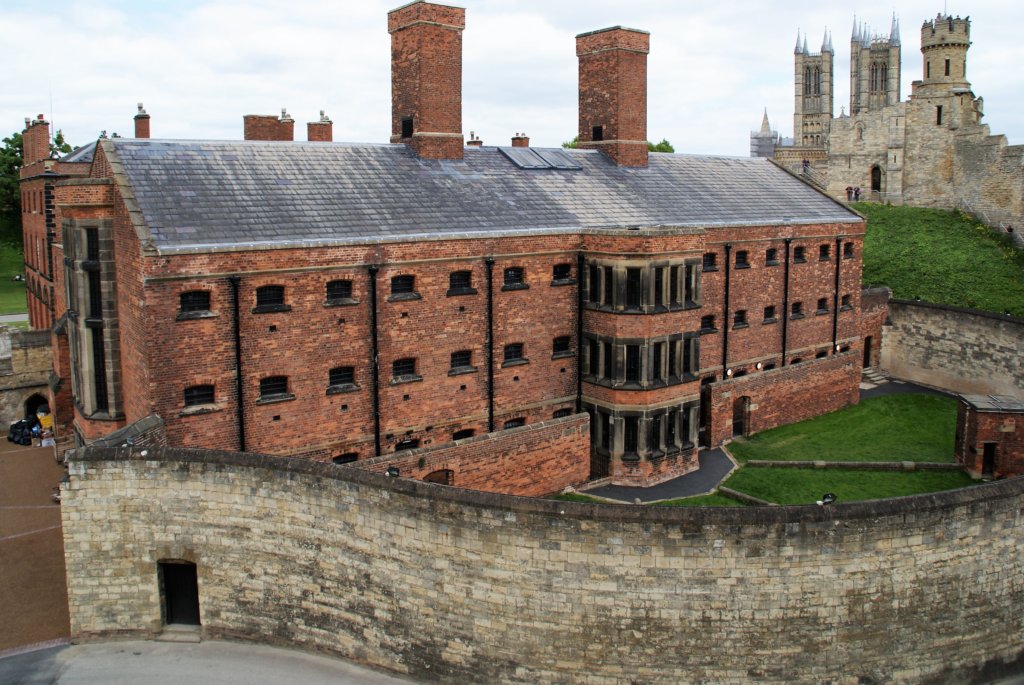
Visit the Castle
Lincoln’s next huge attraction is its castle, just a short stroll from the cathedral. It is one of the best-preserved castles in England and one of only two with two mottes (earth mounds which the buildings are constructed on); the other is Lewes Castle in East Sussex.
Take the time to walk the whole way around the recently refurbished castle walls. You will get great views of the castle complex, the cathedral, the city, and the surrounding countryside.
Inside the castle grounds, you will find law courts which are still in use today, and a three-storey stone prison built in 1787 and used until 1868. The prison is home to a 19th century chapel with individual enclosed seats, the only one of its kind remaining in the world. As you walk around the prison, it might start to feel a little familiar. It has been used several times as a film location, most recently for Downton Abbey.
A new addition to Lincoln Castle is a purpose-built exhibition centre which houses one of only four remaining original copies of the Magna Carta (two are in the British Museum and the fourth is in Salisbury Cathedral). It opened to huge fanfares in 2015, the 800th anniversary of the signing of the Magna Carta at Runnymede.
Today, the castle hosts a number of events, including summer concerts, open days, outdoor film screenings, and, of course, Lincoln’s amazing Christmas market.
Medieval Bishop’s Palace
Opening Times
Monday to Wednesday – closed
Thursday to Sunday – 10am – 5.30pm
Entrance Fees
- Adults – £5.90
- Seniors – £5.30
- Children aged 5 to 17 – £3.50
- Children under 5 – FREE
- Family (2 adults and up to 3 children) – £15.30
Entrance to the palace is free for English Heritage members so, if you are visiting a few qualifying properties, membership may be a cheaper option.
Visit the Palace
When it was built in the 12th century, the palace, located next to the cathedral with sweeping views over the city and surrounding countryside, was one of the most impressive buildings in medieval England reflecting the power and wealth of Lincoln’s bishops. Over the centuries, it has been abandoned and subsequently restored, rebuilt and adapted several times. Today, the ruined parts are managed by English Heritage. New gardens have been laid out. It is a lovely place just to have a breather during a hectic day of sightseeing in the city.
The part of the palace restored in Victorian times is now run as a hotel.
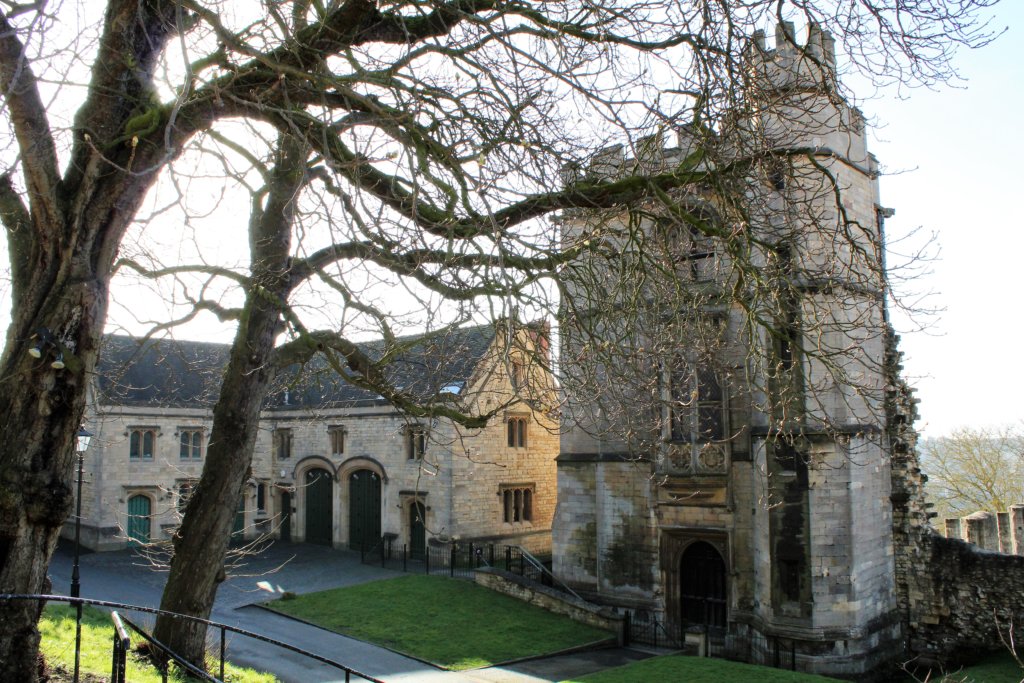
Bailgate
Known by everyone locally as ‘The Bail’, Bailgate is a cobbled shopping street with restaurants and smart boutiques which runs from the Cathedral Quarter to Newport Arch. Its roots go back to Roman times and, indeed, it features on Lincoln’s Roman Trail, an app that you can follow for free. Along the way, you will see the Assembly Rooms (generally not open to the public, but worth a peek inside if there’s an event going on), the Roman East Gate, remains of the Roman walls, and Newport Arch itself. The arch dates from the 3rd century and is one of the surviving jewels of Roman Britain. It is the oldest arch in the UK still used by traffic.
In the summer, Bailgate hosts several lively events, including a busker’s festival, a steampunk festival and a 1940s weekend.
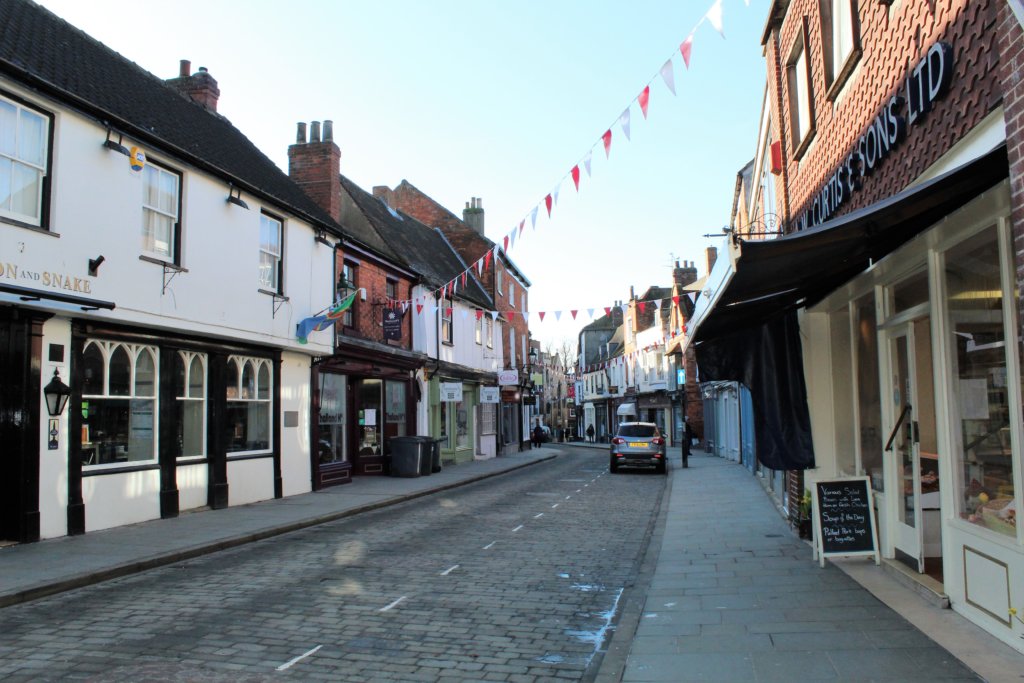
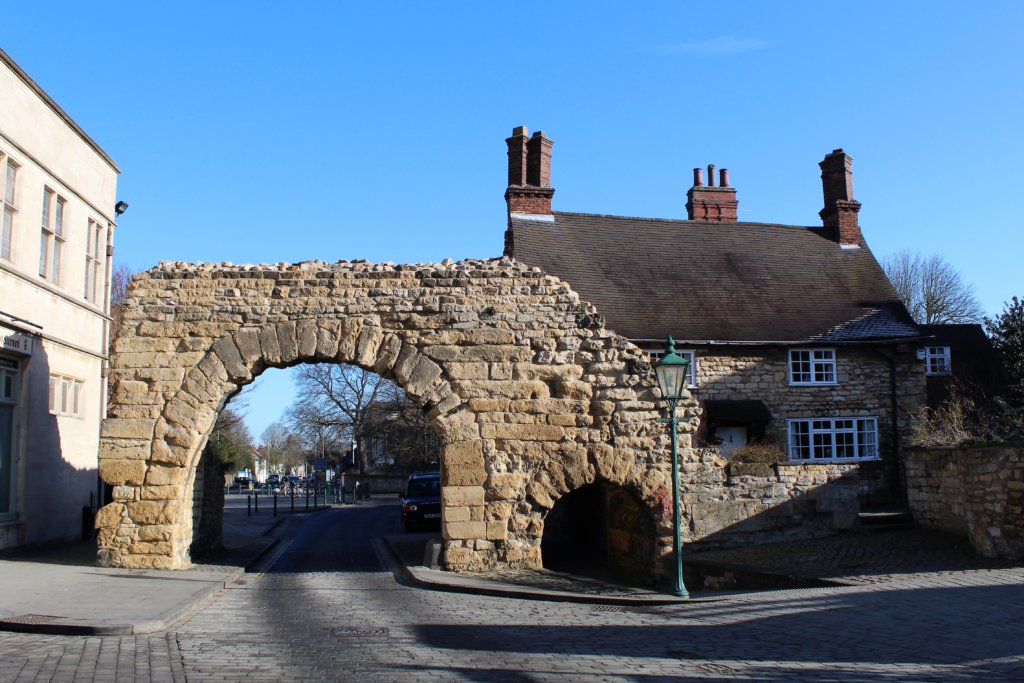
Steep Hill
The clue is in the name! This is the steepest street in Lincoln (a 1 in 7 gradient!) which links the High Street at the bottom with the Cathedral quarter at the top. The central part is the steepest, accessible only on foot, but there is a useful handrail to haul yourself up (or to stop yourself careering all the way down!).
It is possible to visit both parts of the city of Lincoln by car or public transport and avoid Steep Hill altogether, but that would be a shame! There are lots of small independent shops and gorgeous tea rooms where you can pause to catch your breath or have some refreshment. There is also some amazing architecture on show including Jew’s House, built in the 12th century and one of the earliest townhouses still existing in England. This, together with Jew’s Court next door, is evidence of Lincoln’s thriving Jewish community, one of the largest in England in medieval times.
The main reason for walking up Steep Hill, though, is that when you get to the top, you can treat yourself to an ‘I Conquered Steep Hill’ cap or T-shirt or mug or keyring or fridge magnet or … ☺.
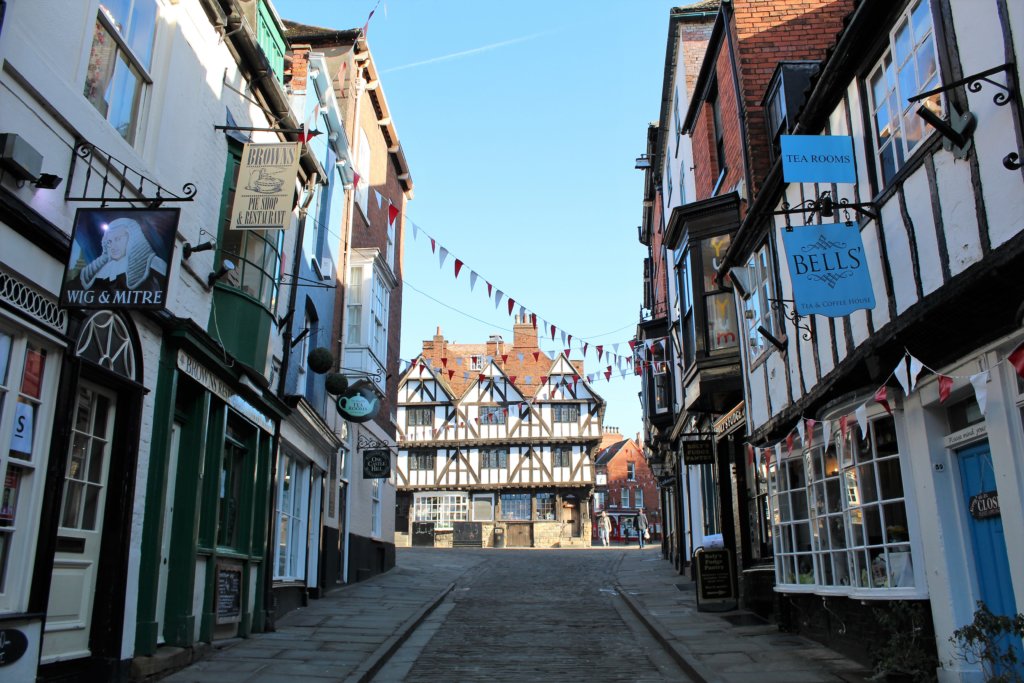
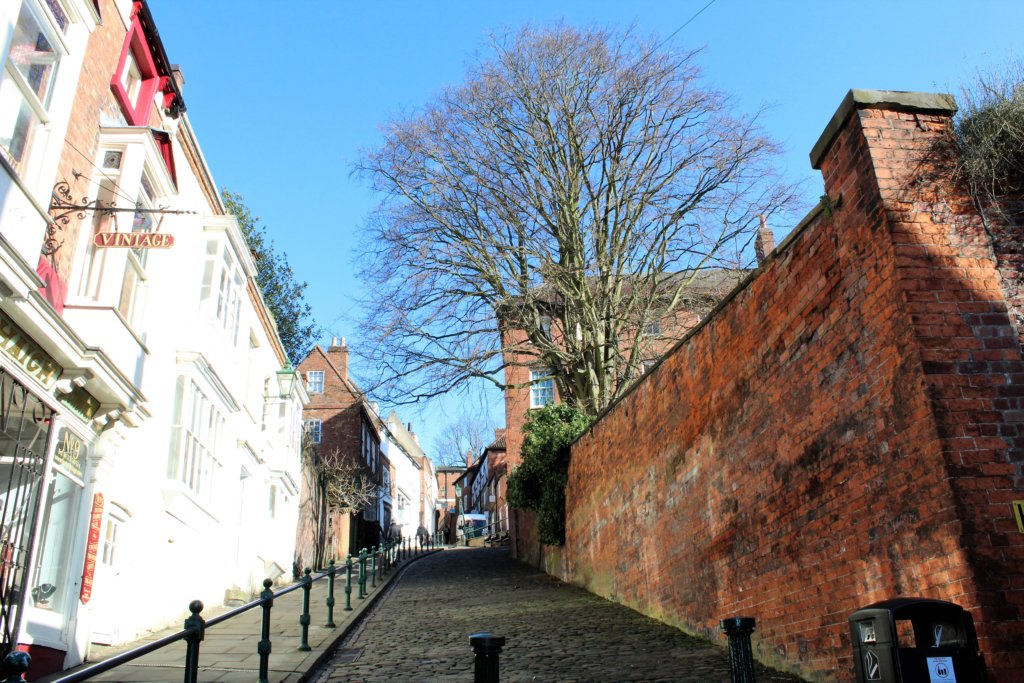
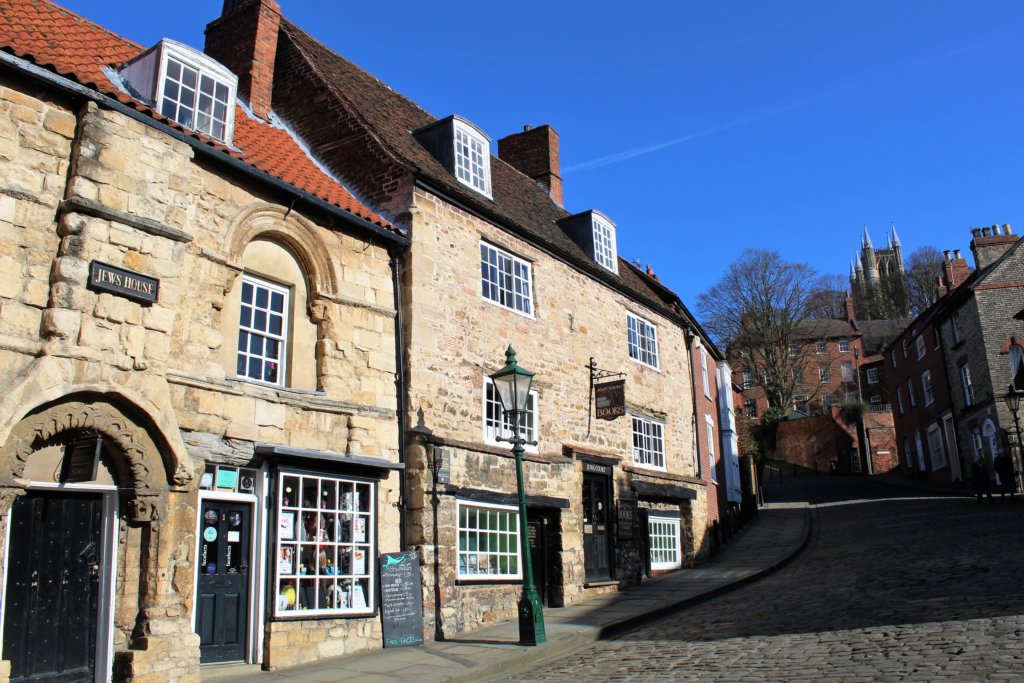
High Street
Lincoln’s High Street not only offers great shopping opportunities but also some architectural gems not to be missed. These include High Bridge, half-timbered housing with the upper storeys jutting out over the River Witham. Built in about 1160, it is the oldest bridge in the UK that still has buildings on it. Also, the 15th-century Guildhall, home to Lincoln City Council, which is built around Stonebow, one of the ancient Roman gates of the city.
The High Street also hosts a monthly farmer’s market as well as regular craft markets and other events.
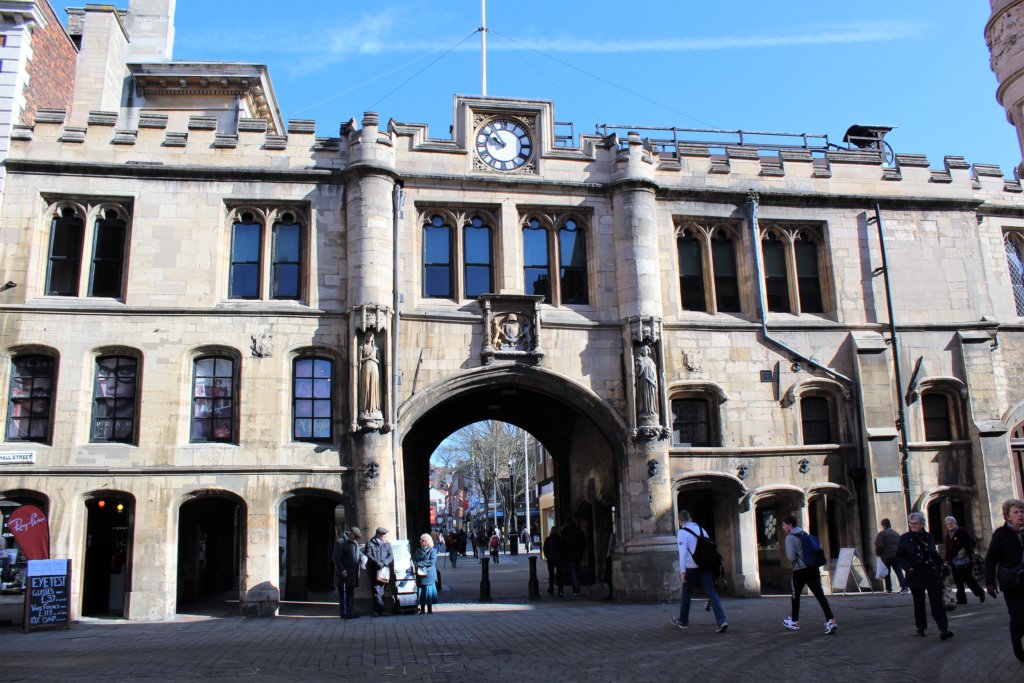
Brayford Waterfront
At the bottom end of town is the new shopping and entertainment area built around Brayford Pool, the oldest inland harbour in the UK. It was here in the first century BC that the first known settlement in Lincoln was sited. In recent years, since the building and expansion of Lincoln University, the area has been redeveloped and is now full of hotels, bars, restaurants and a multiplex cinema. In the summer months, you can also take a boat trip on the Brayford Belle!
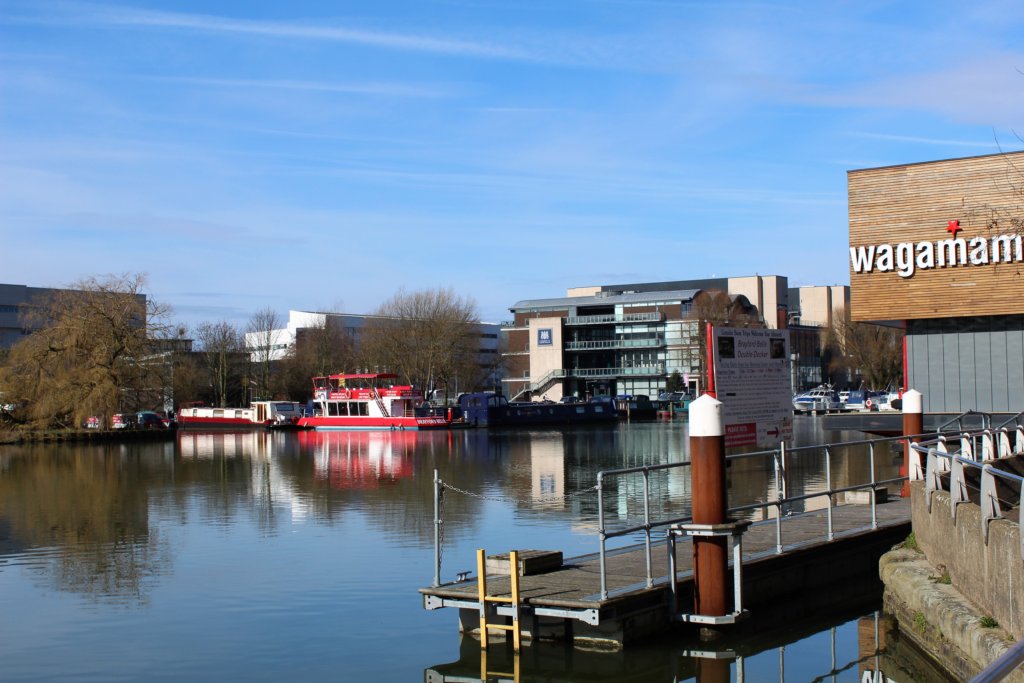
Museum of Lincolnshire Life
Opening Times
Every day from 10am to 4pm (last admission 3.45pm)
Entrance Fees
The museum is free to visit.
Visit the Museum
Housed in Lincoln’s old military barracks, the Museum of Lincolnshire Life is well worth a visit. It has a varied collection which celebrates the social history and culture of Lincolnshire and its people from 1750 to the present day.
There are fascinating recreations of old shops and house interiors as well as an extensive collection of farm machinery and military hardware, including several tanks.
The Collection
Opening Times
Every day from 10am to 4pm
Entrance Fees
The museum is free to visit.
Visit The Collection
The Collection is the name for the newly-amalgamated City and County Museum and the Usher Gallery.
The latter is a Grade II listed building opened by the Prince of Wales in 1927. It was built using money left to the city by James Ward Usher to house his art collection. Today, as well as the permanent displays of furniture, clocks, decorative art and fine art, temporary exhibitions are frequently held here, particularly of modern art.
Lincoln City and County Museum is in a new building erected close to the Usher Gallery. Its exhibits are mainly archaeological.
Other Things to do in Lincoln
Take a Guided Walking Tour
Lincoln guided walking tours reveal the city’s diverse history, the architecture, the industry, the people and the quirky stories. Taking a walking tour of the Cathedral Quarter is the ideal way to get an insight into the city of Lincoln. You’ll be amazed at what you learn from the passionate and knowledgeable Green Badge guides.
Tours can be provided in German, French and Scandinavian languages as well as English.
All tours begin at 11am outside Lincoln Visitor Information Centre. The cost is £5 per adult (payable to the guide – there’s no need to pre-book). Accompanied children under 12 go free. The tour lasts about 90 minutes and is available on the following days:
- May Public Holiday Weekends: Saturday – Monday
- June: every Saturday & Sunday
- July & August: daily
- September & October: every Saturday & Sunday
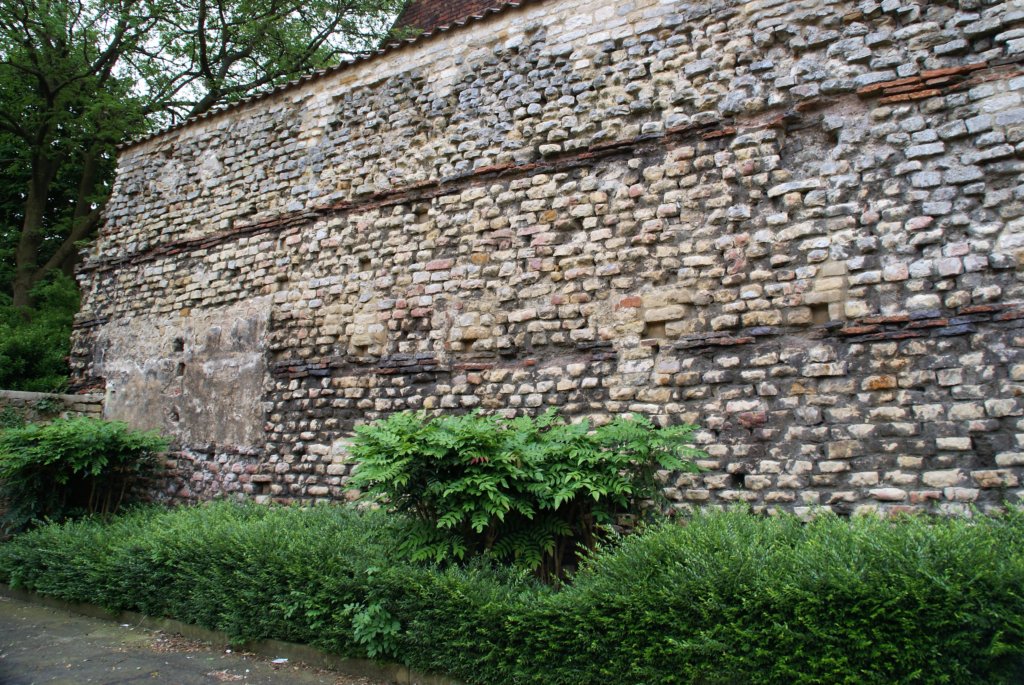
The picture above shows the Mint Wall in Lincoln which we learned about during a guided walk around the city. It is a very rare survivor in Britain of a non-defensive wall still standing to an impressive height above ground. Dating from the late 2nd century, the fragment is 23 metres long and seven metres above today’s street level (approximately two metres is now buried below ground). There are decorative tile courses which served to reinforce the wall and log-holes which supported the wooden scaffolding while the wall was under construction. The pantile coping was added in 1992 to protect the wall from weather damage.
This is just one of the many gems you will learn about if you take a walking tour!
Take in a Show
Lincoln is a city rich in culture with a great reputation as a centre for performing arts. If you are seeking live entertainment, you have several options.
Lincoln Drill Hall
Lincoln’s Drill Hall was built in 1890 as a military and police training hall. Later, the building moved into public use and hosted dances, wrestling, bingo and live bands. In 1963, The Rolling Stones played the venue!
Relaunched in 2004 after a £2.6 million refurbishment, Lincoln Drill Hall today is a thriving and friendly entertainment venue and cafe with a packed programme of theatre, comedy, music, dance, family events, talks, films, workshops, classes, and much more. It is also home to the annual Lincoln Beer Festival and hosts a Christmas pantomime each year.
To find out what’s on, see the Drill Hall website.
New Theatre Royal
Lincoln’s New Theatre Royal is a traditional, elegant, 19th century theatre located in the city centre. A variety of fantastic shows are staged here including live music, tribute bands, plays, films, children’s theatre, comedy nights, and talks. The annual Christmas panto is a must for local families.
Check out the theatre’s website for details of upcoming events.
The Venue
The Venue is a state-of-the-art 230-seat digital cinema located at Bishop Grosseteste University in the city. It shows an eclectic film programme, a mix of mainstream and independent movies, and is also being used for teaching drama and stage theatre productions.
The Venue cinema, located in Bishop Grosseteste University, shows a mix of mainstream and independent films throughout the year. This state of the art cinema has a new digital projection system, surround sound and seating for up to 230. There is also a bar at The Venue so you can enjoy a pre-film drink.
Please check The Venue’s website for film listings and to book tickets.
The Blue Room
Lincoln’s newest entertainment venue, The Blue Room is located at The Lawn in the heart of Lincoln’s Cathedral Quarter. It has been designed to have multiple uses and is used as a theatre, a dinner dance venue, a recital hall, a cinema, a conference setting, and a wedding venue. The historic ballroom hosts live music, comedy, and theatre throughout the year alongside a regular programme of classes such as yoga and zumba.
See the full programme of what’s coming up on The Blue Room website.
Lincoln Performing Arts Centre (LPAC)
Lincoln Performing Arts Centre is part of the University of Lincoln and is a modern 446-seat multi-purpose auditorium, designed for live arts performances, conferences, and film screenings. The building hosts professional touring companies as well as staging shows created by students from the Lincoln School of Performing Arts. Around 400 students study dance and drama at undergraduate and postgraduate level.
For more details, see LPAC’s website.
The Engine Shed
The Engine Shed opened in 2006 following a £6 million renovation of a disused railway container facility. It is now the region’s largest live music and entertainment venue with live international band performances, comedy gigs and weekly student club nights and events. It has hosted acts as varied as Kings of Leon, Human League, Bad Manners, and Jimmy Carr.
See the website for full listings.
Go on an Open-Top Sightseeing Bus
Weather permitting, there’s no better way to see Lincoln than from the vantage point of the top deck of a double-decker bus.
Times
Tours run hourly from 10.30 am to 4.30 pm. Each tour lasts for one hour, with the last one of the day leaving St. Swithins Square at 3.30 pm.
- March – weekends only
- April/May – weekends and Bank Holiday Mondays
- June to September – every day
- October – weekends only
Please note – Tours are sometimes cancelled on large event days. Call 01522 545458 to confirm before travelling.
Ticket Prices
Advance tickets are available at a discounted price from the Visitor Information Centre
- Adults: £10, £12 on the bus;
- Children: free (2 free children under 16 per adult, additional children £4 per child);
- Students: £8 (on production of valid student card), £10 on the bus.
Live commentary brings Lincoln’s history to life on the hop-on hop-off bus tour. Your ticket is valid for two days and you can get on and off as often as you like at any of the nine stops on the route.
The tour bus is accessible with a low floor and space for wheelchairs on the bottom deck. There are 47 seats on the top deck and 32 seats on the lower deck.
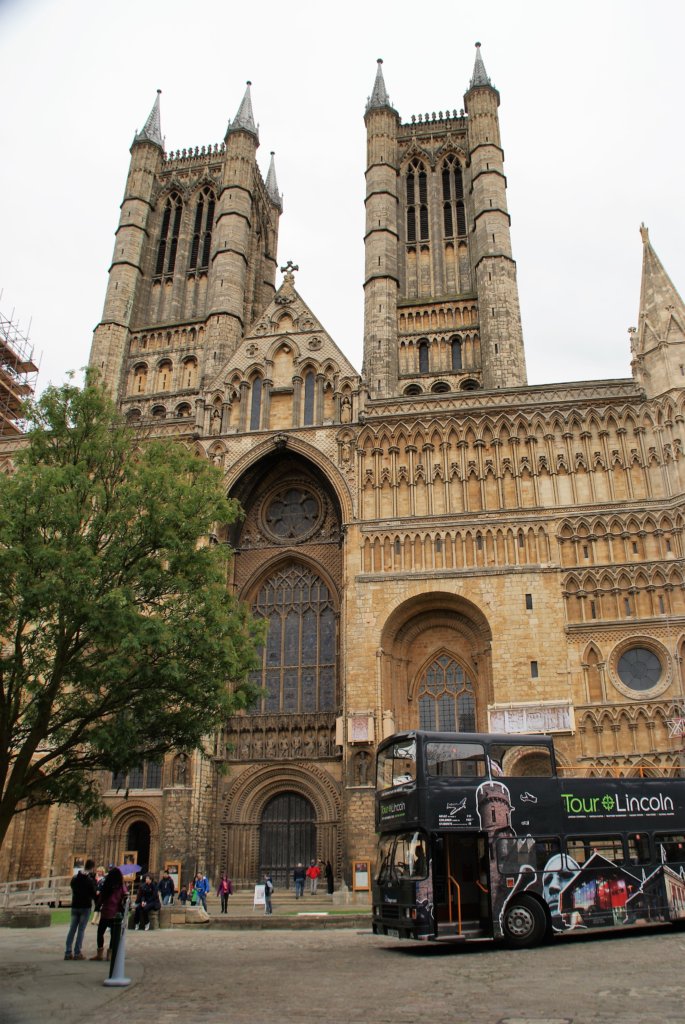
Have a Picnic Lunch in Lincoln Arboretum
Situated in Lincoln’s Cultural Quarter, the Arboretum is a park of Grade II historical importance, containing beautiful gardens, lakes, fountains and a children’s play area. It was designed and laid out between 1870 and 1872 by Edward Milner, one of the most celebrated gardeners of his time.
Lincoln Arboretum is the perfect place to take a breather during a busy day of sightseeing.
Go Shopping
Lincoln has loads of great shopping opportunities, from the widely recognised brands on the High Street to antique shops and vintage boutiques on Steep Hill and The Strait. There is a daily fruit and vegetable market as well as monthly craft, artisan food, and antique markets.
See the ShopLincoln website for a comprehensive guide to what’s available.
Visit Lincolnshire Show
If you are in Lincoln at the end of June, don’t miss a visit to the Lincolnshire Show. Held on the county’s showground not far from the city, it is one of the top county shows in the country. The show is a true celebration of rural Lincolnshire with an eclectic mix of breathtaking entertainment, food, shopping, music, horticulture and farm life. It’s the perfect family day.
Click here for details of next year’s show.
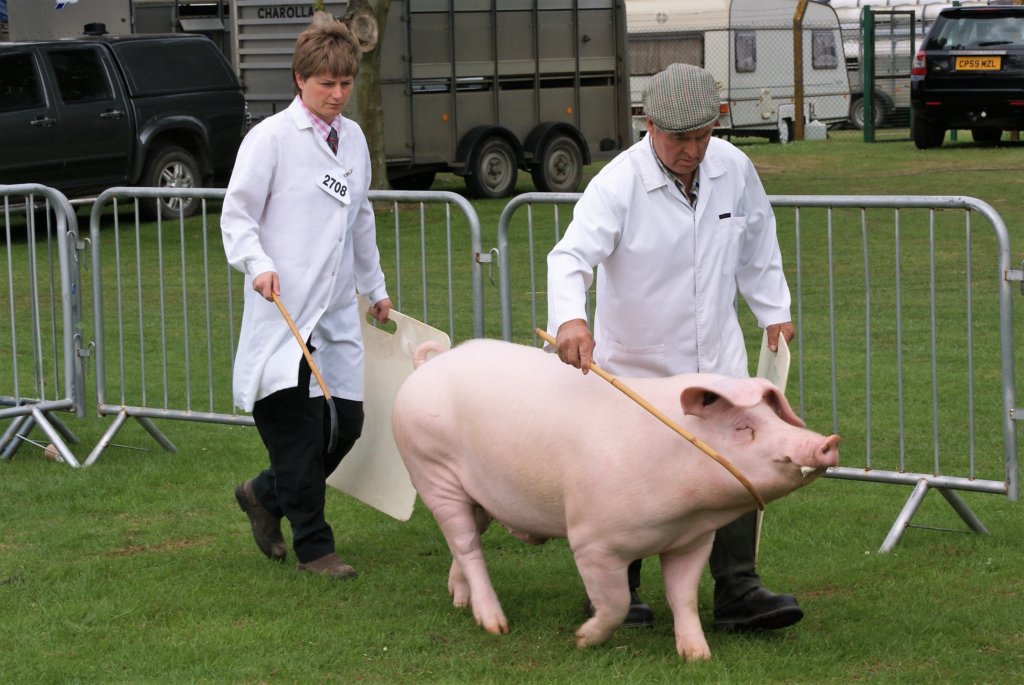
Visit Lincoln Christmas Market
If you are in the city in early December, make sure you visit the Christmas market. It is one of the oldest and biggest in the UK with a huge number of stalls selling unique gifts and festive food and drink. There is a funfair to entertain the children and there are street performers on every corner. The whole city is involved in the market but the epicentre is the beautiful Cathedral Quarter with prettily-lit stalls filling the courtyard in front of the cathedral as well as the castle grounds.
Check out the official website for information about the next market.
If you like what you’ve read, PIN IT!!
If you’re travelling soon, please use these links!
Are you travelling soon? Use these links when making your bookings. These are the companies we use. It won’t cost you any extra, but we will earn a few pennies to help keep Happy Days Travel Blog going. Thank you!!
- Book your travel insurance with World Nomads (Never leave home without protecting yourself, your trip and your belongings!)
- Book your flight with Skyscanner
- Book your accommodation with Booking.com
- Book a tour with Tour Radar or Intrepid Travel
- Book city tours and activities with Get Your Guide
Disclosure: This post contains affiliate links. If you click through for more information, or to make a purchase, it may result in a small commission coming my way. Please note that there is no extra cost to you associated with this. Thank you so much for supporting my site.
Join our mailing list

Sign up to receive our monthly newsletter. Keep up with what we're doing and be the first to receive special offers and insider tips.

